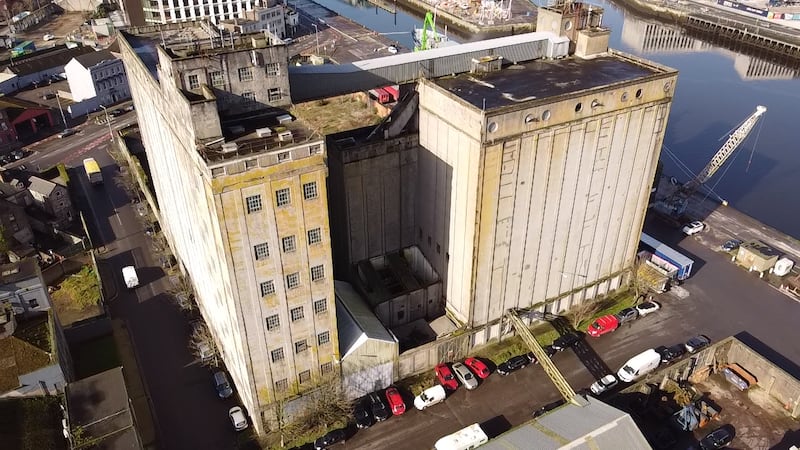One of the country’s leading developers has taken an innovative step to recycle thousand of tonnes of demolition material from a €350 million redevelopment project in the Cork docklands for use in improving public transport.
Brian O’Callaghan of O’Callaghan Properties has offered the 16,000 tonnes of mass concrete material generated by the demolition of the huge R&H Hall silos on Kennedy Quay to Iarnród Éireann for use as infill on some of its rail lines.
The 33-metre silos dominated the Cork skyline for more than 90 years but they had to be demolished when O’Callaghan Properties applied for planning permission for a residential and commercial development on a 1.5-hectare site adjacent to Kennedy Quay.
Mr O’Callaghan said his firm had to apply for planning permission to demolish the silos after they were found to be suffering from structural issues, which made a viable repurposing of them impossible, unlike the nearby Odlums building, which will be reborn as a mix of apartments and businesses.
RM Block
“We had a number of options to deal with the demolition material, the simplest of which was to transport it to landfill. Another option was to crush the concrete and seek to reuse it in a sustainable fashion, locally if possible,” he said.
“We have been working on site for over a year with our demolition experts, O’Kelly Brothers, on all the processes involved and we’re pleased to announce the transportation of the product to the Irish Rail railway line upgrade on the Cork-Midleton line.”
Mr O’Callaghan said all of the steel reinforcement and structural steel from the silos is also being recycled.
He explained that the reuse of mass concrete demolition material is relatively new in Ireland and is highly regulated by the Environmental Protection Agency (EPA), which requires the material to undergo a rigorous crushing, testing and certification process before it can be used.
It is estimated that the reuse of the crushed concrete will potentially save approximately 180,000kg of CO2 emissions – the equivalent of the total emissions generated by 55 motorists each year or the electricity emissions from 250 homes.

The R&H Hall buildings will be replaced by a new, sustainable landmark building that occupies the same footprint, making reference in its design to the industrial characteristics of the silos, which were examined and their features recorded for inclusion in an architectural database of the area.
The new development project involves the construction of 178 apartments and, according to Mr O’Callaghan, has the potential to create 5,000 new jobs on completion in what is seen as a big boost for the revitalisation of the city’s docklands.
The project involves the construction of four new buildings, ranging in height from nine to 12 storeys, providing more than 92,000sq m of development space which will include office, residential, retail and a 130-bed private hospital run by French group Orpea.
According to a spokesman for O’Callaghan Properties, the development will include almost 42,000sq m of office space and almost 15,000sq m of residential space, while the hospital will occupy almost 14,000sq m in a specially designed triangular-shaped building.
The development will involve the restoration and repurposing of the derelict Odlums Mills building on Kennedy Quay to create two seven- and nine-storey buildings incorporating 84 apartments, a cinema, a food hall and office space.















